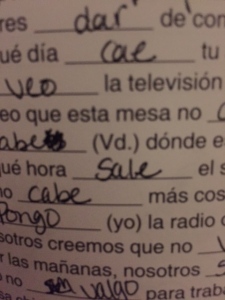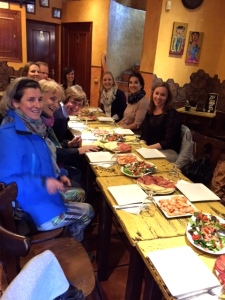I married into a family who speak Spanish in addition to English, and because Spanish is part of their culture, I’ve been trying to learn some for a couple of years now. It’s also a great second language to have in your back pocket. Living in Ecuador helped a lot with my vocabulary and general understanding, but didn’t really do much for my speaking ability because all of our friends spoke English. Thus, since moving to Europe I have done a couple of trips to Spain to take Spanish immersion courses to improve my speaking ability.
While there are some who go for a long period of time, my trips were relatively short by comparison. In October I went to Salamanca for two weeks, and in March I went to Málaga for three weeks. If you’ve ever wanted to get to know a culture, this is a fantastic way to do it. Not only is lodging affordable, but being connected to a language school opens a lot of doors to the local scene. Here are some things to consider when making decisions regarding language immersion programs, based on my own experiences.
1. Choose your School. The most important thing to choose after you’ve decided to take a language immersion class is a school. I relied on Google and various websites to get the information I needed. I had completely different experiences in both of the schools I attended. One was less academic and more of a “cultural” experience, offering lots of activities and classes that were more centered on practicing what you already know. The other school was definitely a strict teaching environment, with grammar lessons, conversation classes, and writing classes. Each week we had a test to determine whether we would move to the next level or not. It covered a lot of new material very quickly, forcing me to study each night and really try and push myself. I preferred this school over the first one because at my level I really needed to expand my knowledge base and learn to speak and understand on a higher level.
2. Choose how many classroom hours to take. You can choose how many hours per week you want to learn, starting with 20. In Salamanca I went for the super intensive course and had classes for 6-8 hours per day which turned out to be way too much. By the end of the day I wasn’t really absorbing anything and I was dead tired. That’s why in Malaga I stuck with 24 hours, with 4 hours per day and twice a week I had two extra hours of conversation. It was the perfect amount for me and with the homework I was plenty occupied.

3. Find appropriate accommodations. The schools help you find accommodations. You can stay with a local family, in a shared apartment with other students, at the school itself (if it offers lodging) or in a local hotel or hostal. In Spain the prices range anywhere from 10 Euro to 75 Euro. When you stay with a family they usually include full or half board, meaning they will provide up to two meals per day included in the price of your stay. You have to eat on their schedule, so keep that in mind as you consider your options, especially when in Spain because they eat dinner no earlier than 10:00 p.m. However, it can be a great choice because you’ll be forced to practice what you learn in class with your host family.

In my experience, the most important factors in selecting a place to stay have to do with distance from the school and cleanliness. In Salamanca I moved twice, because I was unhappy staying with the host family for a couple of reasons – first, it was just over 30 minutes walking distance (at a brisk pace) from the school which made it hard to go back for lunch on my afternoon break and make it back in time for afternoon classes and activities, and then I didn’t like walking home in the neighborhood after dark by myself. Additionally, the family was running more of a bed and breakfast rather than a “host family” experience. I moved to a student apartment ten minutes from the school, but it was filthy and had extra secret people living in it – needless to say, I moved to a hostal (not a hostel) just across the street from the school and I was very happy there. It was clean, I could eat when I wanted and I was so close to school that I could attend all the activities I wanted and didn’t have to worry about getting home at night. Being a petite woman, you have to think about your safety. In Malaga I found a studio apartment on Airbnb for a great price that was about a 15-minute walk from school and there was a bus stop right outside.
4. Take advantage of the activities and local culture. If you do take a destination language course, take advantage of the activities the school offers. I went on day trips, city tours, took cooking lessons, museum tours, food and wine tours, etc. The activities not only helped me meet other students, but they also taught me a lot about the local area and culture.






It’s a little scary committing to go somewhere by yourself for weeks at a time, but it was a great learning experience and I’ll do it again while I’m in Europe. At times I felt like a fish out of water, but I’m kind of used to that. It’s part of what helped me grow and forced me to use the language tools I was learning in class. Not only did I get to know more of Spain on a more than the average tourist level, but I also met some wonderful people and learned how to better communicate in another language.
The school in Spain that I would most recommend is Malaca Instituto in Málaga. It’s an award winning school with exceptional teachers and I learned more than I had bargained for while I was there. The facilities are beautiful and it also has its own hotel, café and bar and a pool, and it’s on the Costa del Sol.
